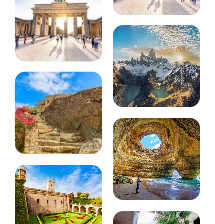
11 must-see things to do in Les Baux-de-Provence
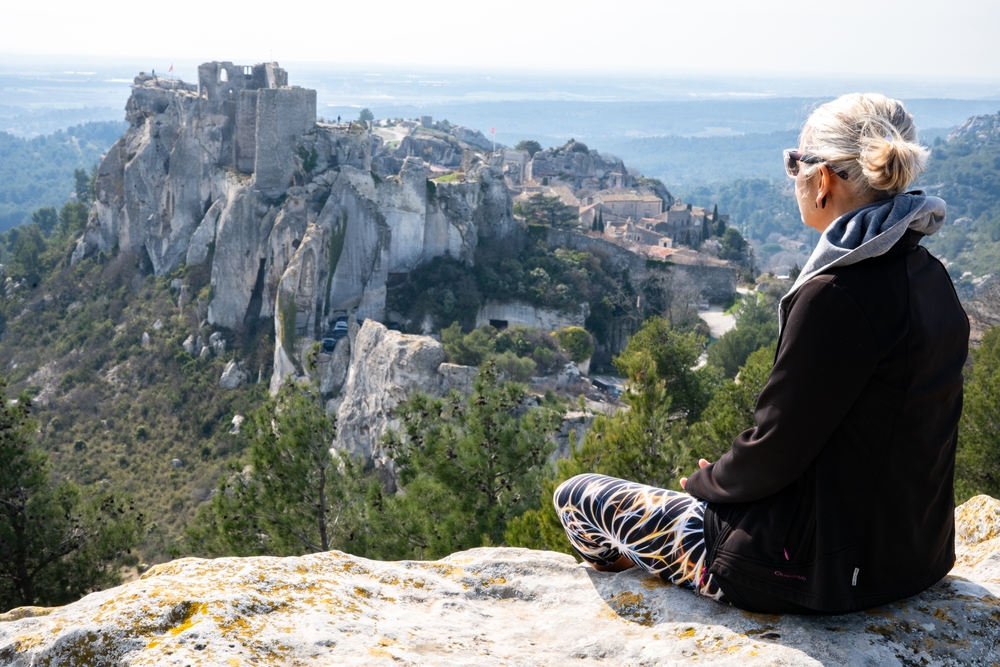
Perched on a rocky outcrop in the heart of the Alpilles mountains, Les Baux-de-Provence is one of France’s most beautiful villages. This medieval town, with its cobbled streets winding between pale stone facades, offers an exceptional journey back in time. With its thousand-year-old castle, remarkable religious heritage and breathtaking views over the Provencal valley, this jewel of the Bouches-du-Rhône region has plenty of surprises in store. Listed as an exceptional site, this former stronghold of the Lords of Les Baux boasts a unique architectural heritage and unforgettable cultural experiences such as the Carrières de Lumières. Discover the 11 must-see things to do in Les Baux-de-Provence to make the most of your visit to this emblematic Provencal village.

See also the Provence guide :
- Visit Avignon in 1 day: 27 things to do and see on foot
- Visit Arles: 2000 years of history to discover
- 26 must-do activities in the PACA region
- Discovering the Alpilles Regional Nature Park
- 20 not-to-be-missed excursions around Marseille
- 3 beautiful villages not to be missed during your stay in the Alpilles
- Top 5 activities in Aix-en-Provence
- Top 10 culinary specialities in Aix-en-Provence
- What are the most beautiful villages to discover around Avignon?
1. Château des Baux-de-Provence
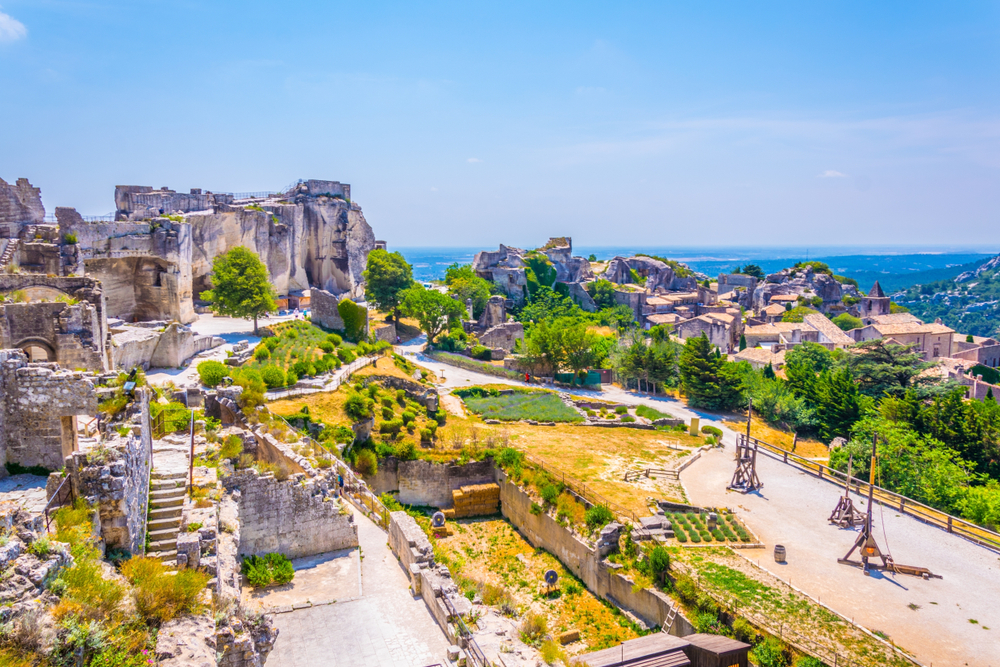
A veritable stone vessel overlooking the valley, the Château des Baux-de-Provence (Rue du Trencat, 13520 Les Baux-de-Provence, rated 4.6/5 on Google for over 12,000 reviews) is the village’s major attraction. This medieval fortress, one of the oldest in Europe, bears witness to the glorious past of the Lords of Les Baux, who ruled 79 towns and villages in the Middle Ages.
The audio-guided tour plunges you into the tumultuous history of this citadel through its imposing towers. Admire the Sarrasine tower, the Paravelle tower and the Bannes tower that line the fortified enclosure. The keep and Sainte-Catherine chapel offer a striking insight into medieval architecture. Reconstructions of siege engines, including a life-size trebuchet, illustrate 13th-century warfare techniques. The castle regularly stages spectacular demonstrations of these machines during historical events. From the top of the ramparts, the 360-degree panoramic view takes in the Alpilles, the Crau plain and, on a clear day, the Mediterranean. This exceptional site explains why this strategic position was so coveted for centuries.
2. Saint-Vincent church
Built between the 12th and 16th centuries, the church of Saint-Vincent (Place Saint-Vincent, 13520 Les Baux-de-Provence) is the village parish church. Built in the Provençal Romanesque style, part of the church is troglodytic, i.e. dug directly into the rock. This unique architectural feature bears witness to the ingenuity of the medieval builders, who took full advantage of the geological configuration of the site.
The interior of the building contains a remarkable artistic treasure: the modern stained glass windows created by Max Ingrand in 1960. These luminous works, donated by Prince Rainier III of Monaco in 1962, bring a touch of modernity and colour to this thousand-year-old setting. The sober, elegant Romanesque nave contrasts harmoniously with these contemporary creations. Every year, the church also hosts the traditional shepherds’ Christmas mass, an authentic Provencal celebration perpetuating the ancestral customs of the region.
3. The Santon Museum
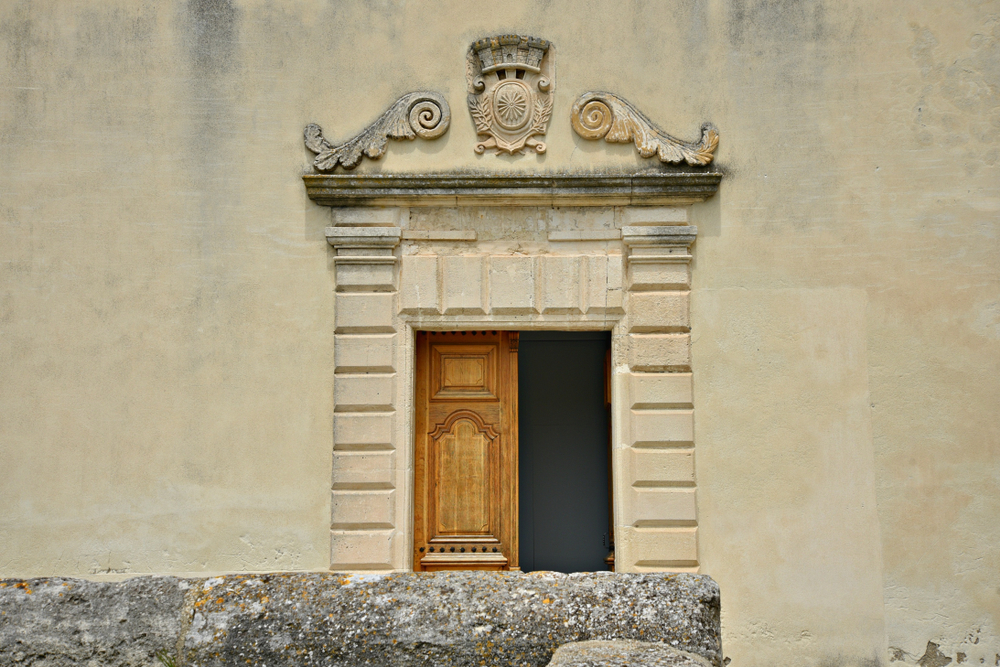
Housed in the former 16th-century guardhouse, the Musée des santons (Rue Porte Mage, 13520 Les Baux-de-Provence) preserves an emblematic Provencal tradition. This exceptional collection brings together santons from the 17th century to the present day, bearing witness to the evolution of this typically Mediterranean folk art.
The santons of Provence naturally dominate the collection, representing the traditional characters of the Provencal cot with their colourful costumes and trades of yesteryear. The museum also exhibits Neapolitan santons, of larger dimensions and with sumptuous decorations, as well as a rare collection of 19th-century church santons from the Carmelite convent in Avignon. Each santon tells its own story, based on Provençal folk traditions and faith. This visit will help you understand the importance of santons in local culture and their role in Christmas celebrations. It’s an immersive cultural experience that makes a richer discovery of the region’s intangible heritage.
4. La Porte Eyguières
The Porte Eyguières, also known as the Porte de l’Eau, is a major architectural landmark in the history of Les Baux-de-Provence. Until 1866, this fortified gateway was the only vehicular access to the village, bearing witness to the defensive layout of the medieval town.
Its name reveals its essential function: it was through this gate that the inhabitants had to pass every day on their way to the Vallon de la Fontaine to fetch water. This chore of fetching water was a regular feature of village life before the arrival of running water. The architecture of the gateway, with its massive stonework and semi-circular arch, is a perfect illustration of medieval construction techniques. From here, you can see the steep path leading down to the village fountain. This gateway is a reminder of the constraints of everyday life in a hilltop village and the ingenuity of its inhabitants in adapting to the challenges of the topography. Crossing this historic threshold means following in the footsteps of the generations of Baussencs who have brought these narrow streets to life over the centuries.
5. The Hôtel de Porcelet – Yves Brayer Museum
This elegant 16th-century Renaissance town house belonged to one of Provence’s most prestigious noble families. Today it houses the Musée Yves Brayer (Place François Hérain, 13520 Les Baux-de-Provence, rated 4.5/5 on Google), dedicated to the work of this renowned French painter, illustrator and theatre designer.
Yves Brayer (1907-1990) left his mark on twentieth-century art with his elegant figurative style and luminous palette. The museum is exhibiting a representative selection of his work: sun-drenched Provençal landscapes, vibrant bullfighting scenes, expressive portraits and refined still lifes. His paintings capture the very essence of Provence, with a particular sensitivity to the region’s characteristic play of light. The artist also created the monumental frescoes in the Chapelle des Pénitents Blancs, another of the village’s landmarks. A visit to this museum sheds valuable light on the work of an artist deeply attached to Baux-de-Provence, and allows visitors to appreciate his poetic vision of the Provencal landscape.
6. The Chapel of the White Penitents
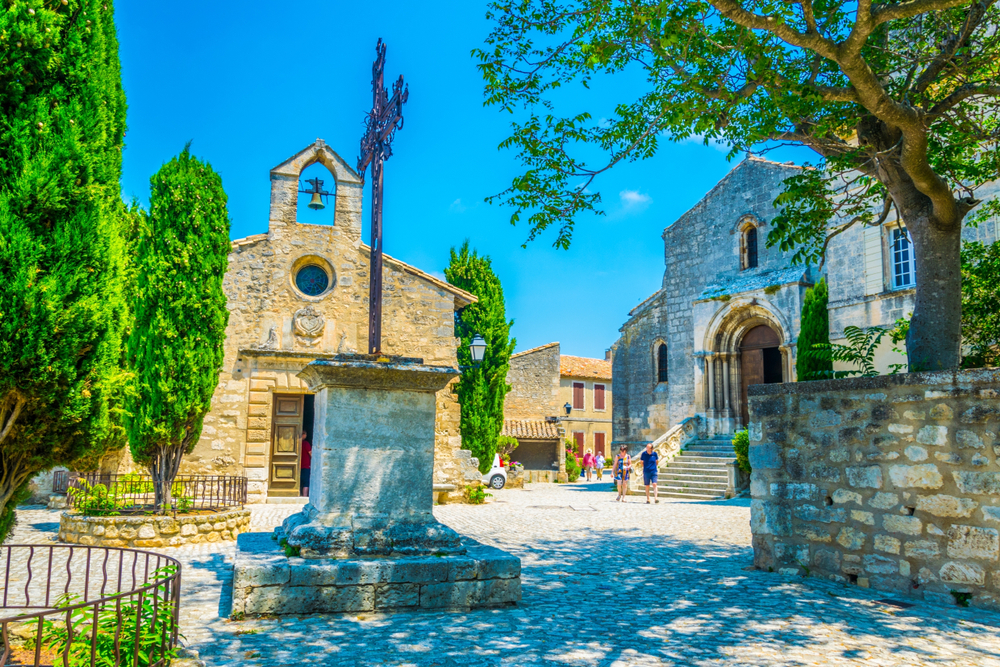
Perched on the edge of the cliff overlooking the Vallon de la Fontaine, the Chapelle des Pénitents Blancs (Rue de la Calade, 13520 Les Baux-de-Provence) occupies a spectacular position. Built in the 17th century by the Confrerie des Pénitents Blancs, this religious edifice was raised from its ruins in 1937 by the Confréries de Langue d’Oc, thus saving a precious heritage.
The interior of the chapel is home to an essential masterpiece: a monumental fresco painted by Yves Brayer in 1974. This masterpiece depicts the Shepherds’ Christmas in the pure Provencal tradition, with its characters in traditional costumes and typical Alpilles landscapes. Brayer’s vivid colours and dynamic composition bring this emblematic scene of Provençal culture to life. The fresco occupies the entire choir of the chapel, creating a striking effect as you enter the building. The work bears witness to the artist’s attachment to local traditions and his talent for transposing Provençal folklore into contemporary sacred art. A visit to this chapel is an unforgettable moment of artistic and cultural meditation.
7. The Hôtel Jean de Brion – Louis Jou Foundation
This Renaissance mansion, magnificently restored by Louis Jou, bears witness to the artistic renaissance of Les Baux-de-Provence in the 20th century. The Fondation Louis Jou (Grand Rue, 13520 Les Baux-de-Provence, rated 4.7/5 on Google) perpetuates the memory of this all-round artist: master typographer, engraver, printer and talented publisher.
Louis Jou is one of the pioneering artists who have helped to safeguard and enhance the heritage of Les Baux. His harmonious restoration of the Hôtel Jean de Brion has served as a model for the preservation of the village. The museum exhibits his finest works: rare editions illustrated with original engravings, typefaces created especially for his works, delicate etchings and woodcuts. His work as a bibliophile printer combines technical rigour with artistic sensitivity. The works on display bear witness to a craft of excellence in which every detail counts. This tour is an opportunity to discover a little-known part of the village’s cultural history and one man’s commitment to preserving the architectural and artistic heritage of Baux-de-Provence.
8. The Queen Jeanne Pavilion
Nestling in the peaceful Vallon de la Fontaine, near the old wash-house, the Pavillon de la Reine Jeanne is an elegant example of Renaissance architecture. This refined edifice was built by Jeanne de Quiqueran, wife of Honoré des Martins, Baron of Les Baux from 1568 to 1581.
This harmoniously proportioned corner pavilion once adorned a vast pleasure garden belonging to the des Baux family. Its position on the edge of the valley’s perpetual spring is not insignificant: water was a luxury in this hilltop village. The Renaissance facades feature meticulous architectural detailing, testifying to the refinement of the Baux court at the time. Today, the site offers a welcome break in the shade of century-old plane and olive trees. The murmur of the fountain and the coolness of the valley create a soothing atmosphere, contrasting with the aridity of the plateau. It’s the ideal place to take a contemplative break after wandering the steep streets of the village, enjoying the green setting that has inspired so many artists over the centuries.
9. The Carrières de Lumières
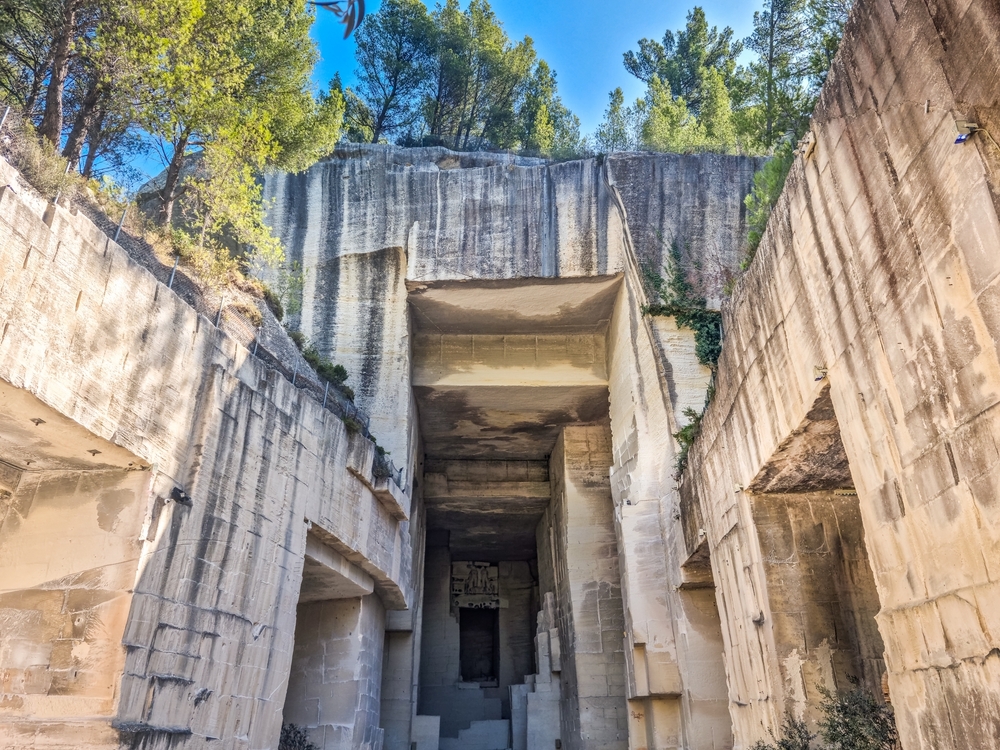
Located in the impressive Val d’Enfer, the Carrières de Lumières (Route de Maillane, 13520 Les Baux-de-Provence, rated 4.7/5 on Google for over 26,000 reviews) offer an absolutely unique artistic experience. These monumental 14-metre-high former limestone quarries host spectacular immersive exhibitions that have revolutionised digital art.
Thousands of digital images of masterpieces from the history of art are projected onto the immense walls, pillars and floors of the quarries, accompanied by a spellbinding soundtrack. Visitors wander freely through this timeless space, totally immersed in the world of the greatest painters. In 2025, the Carrières will present the exhibitions “Monet, creator of Impressionism” and “Le Douanier Rousseau, au pays des rêves”. The monumental projection transforms the works, revealing details invisible to the naked eye and creating enchanting colour atmospheres. The constant indoor temperature of 14-16°C ensures comfort even in summer. Allow around an hour to fully enjoy the show, which is repeated over and over again.
10. The Trémaïe and the Gaïe
At the foot of the rocky spur and the Château des Baux, the Trémaïe and Gaïe are remarkable ancient funerary stelae. A charming garrigue path, scented with thyme and rosemary, leads to these little-known historic monuments, which bear witness to the Gallo-Roman occupation of the site.
The Gaïe stele features a bas-relief depicting two half-bodied figures, dressed in Roman togas and frozen in a solemn attitude. This funerary sculpture, probably dating from the 1st century AD, illustrates the high social status of the deceased. The second stele features a bas-relief of the Three Marys, known as Tre Maré in Provençal: Marie Jacob, Marie Salomé and Sarah. This early Christian representation bears witness to the spiritual continuity of the site over the centuries. These monuments, often overlooked by visitors in a hurry, are well worth a visit. They reveal the archaeological wealth of the site and the historical stratification that makes up the heritage value of Les Baux-de-Provence. The walk up to these stelae also offers superb views over the village and a chance to appreciate the spectacular geology of the Alpilles.
11. Hiking in the Alpilles
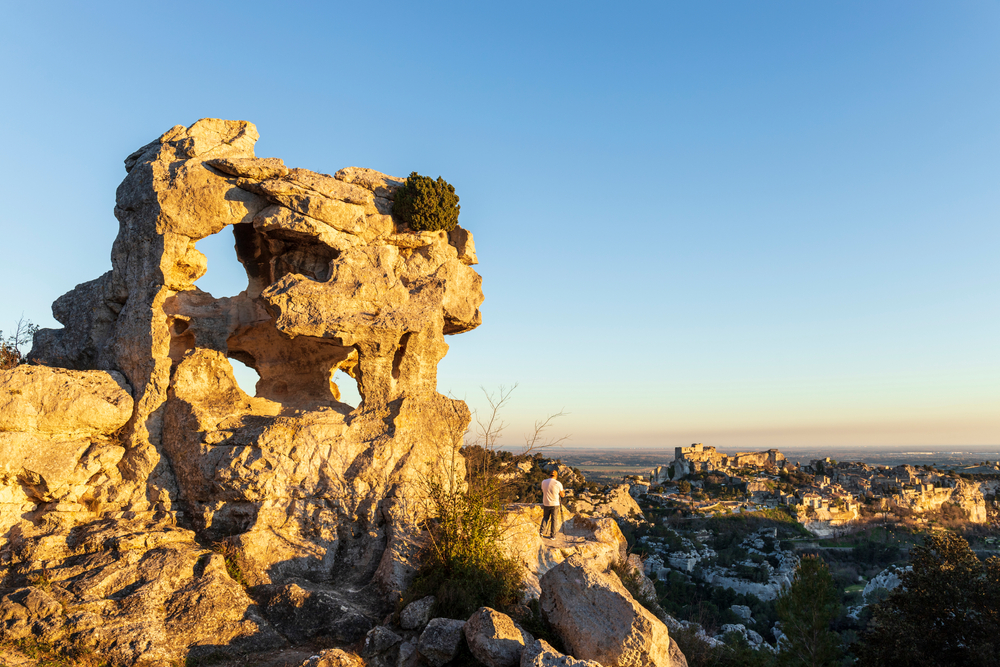
The Alpilles Regional Nature Park is an exceptional playground for nature lovers and hikers. This limestone massif, which stretches for around twenty kilometres, offers a mosaic of typically Provençal landscapes: fragrant garrigues, Aleppo pine forests, spectacular white cliffs, centuries-old olive groves and terraced farming.
Les Baux-de-Provence is the starting point for several signposted trails, suitable for all abilities. The crest trail offers breathtaking panoramic views over the valley and gives you the chance to observe the local fauna: Bonelli’s eagles, kestrels, ocellated lizards and an exceptionally rich Mediterranean flora. In spring, the meadows are covered with wild orchids and dwarf irises. The GR6, which crosses the massif, offers longer walks to discover the hilltop villages and remarkable natural sites. The old restored sheepfolds bear witness to centuries-old pastoral activity.
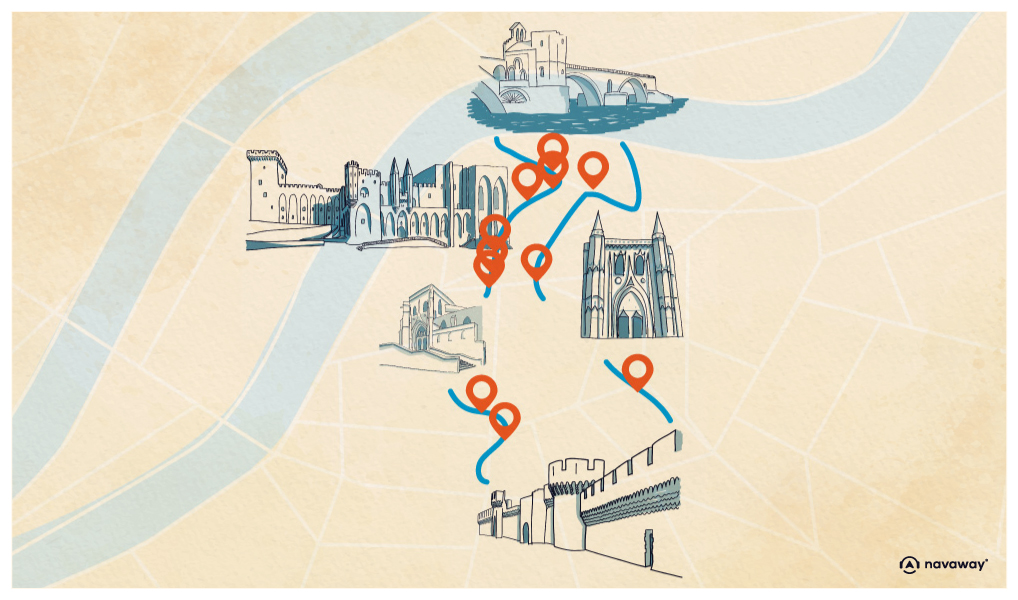
When you visit Les Baux-de-Provence, you’ll discover much more than just a medieval village. This exceptional site boasts two millennia of history, a remarkable architectural heritage and unique cultural experiences such as the Carrières de Lumières. From the thousand-year-old castle overlooking the Alpilles to the cobbled streets lined with art galleries, churches adorned with contemporary frescoes and breathtaking views over Provence, every corner of the village reveals unsuspected treasures. The unspoilt authenticity of Les Baux-de-Provence, its commitment to heritage enhancement and its ability to combine tradition and modernity make it a must-visit destination in the PACA region. Whether you’re a medieval history buff, an art lover, a hiker or simply looking for an authentic Provencal setting, Les Baux-de-Provence will meet all your expectations. To make your experience even richer, don’t hesitate to download the Navaway app, which will accompany you as you explore this jewel of the Alpilles and reveal the secrets that only the locals know.
Frequently asked questions about visiting Les Baux-de-Provence
How long does it take to visit Les Baux-de-Provence?
Allow a full day to take full advantage of the village. Allow 1 hour for the village itself, 1 hour for the Château des Baux with its audio guide, and 1 hour for the Carrières de Lumières. If you want to visit the museums and go hiking in the Alpilles, a day and a half is ideal.
What are the opening times and prices of the Château des Baux-de-Provence?
The Château des Baux-de-Provence is open all year round. Opening times: January, February, November and December from 10am to 5pm; March and October from 9.30am to 6.30pm; April to September from 9am to 7pm. Prices 2025: adults €10, seniors (over 65) €9, children (7-17) €7, free for under-7s. The audioguide is included in the ticket.
Where can I park in Les Baux-de-Provence?
The village has several pay-and-display car parks at the entrance: 2025 rates of €5 per hour, €7 per four hours or €9 per day. It is advisable to arrive early in the morning, especially in high season (July-August) and at weekends, as parking spaces are limited and the village is very busy.
Are the Carrières de Lumières accessible all year round?
The Carrières de Lumières are open virtually all year round, with a winter break in January to renew the exhibitions. The temperature inside remains constant at 14-16°C, so bring warm clothing even in summer. Adult admission: around €16. The exhibition lasts around 45 minutes and is repeated in a loop.
Can you visit Les Baux-de-Provence with children?
Absolutely! Children particularly enjoy the castle with its medieval war machines, the trebuchet demonstrations and the Carrières de Lumières, which offer a magical visual spectacle. However, the village is very steep, with cobbled streets and staircases, so it’s best to use a baby carrier rather than a pushchair. Several restaurants offer children’s menus.
200 audioguided tours for cities all around the world
Download